NALANDA: THE FIRST LIVE-IN UNIVERSITY
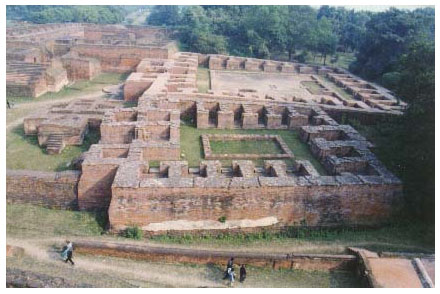
Starting around the 5th century BCE in a small monastic university, Nalanda developed into a full-fledged center of learning that lasted almost 1200 years. At its height it boasted 10,000 students and 1500 teachers, many stupas, lecture halls, meditation halls and at least 300 apartments. Students from most Asian countries, especially Tibet, Myanmar, Sri Lanka, China and Nepal and from all over India flocked to this center of learning. Nalanda is one of the two oldest universities in the world (the other was Takshasila or Taxila, now in Pakistan) and, it was the oldest live-in university for Buddhist learning as literally a Harvard or Oxford of antiquity! The location of Nalanda is 93 KM southeast of Patna in the state of Bihar in Northeast India.
The name Nalanda means “insatiable giving”. During its heyday the greatest teachers taught there and the pupils included kings and generals; it was a great privilege to be a student in this university. Chandragupta (the first Maurya king) was a student there and so was Nagarjuna the great proponent of Mahayana Buddhism, who also taught in the university. The Buddha gave several discourses in Nalanda and he proclaimed that spending some time in this university and meditating led to enhancement of one’s life. Mahavira Vardhamana of Jainism also spent several seasons in Nalanda. While Ashoka the Great and Harshavardhana were the most well-known patrons of the university, virtually all monarchs supported it and built monasteries there. While there are many accounts about the state of this learning center, the most detailed and elaborate was written by the famous Chinese Buddhist scholar Hieun-Tsang who lived and learned there for 3 years.
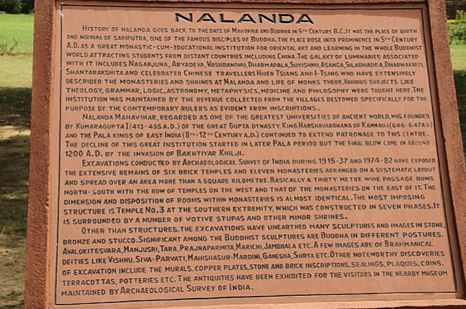
In many respects Nalanda functioned like a modern university. The students had oral exams at the entrance, but no specified duration of courses was adhered to or degrees awarded upon completion of their studies. The subjects varied from mathematics and astronomy to language and grammar and philosophy and theology. A vast library existed in the university but a malicious fire destroyed and left no remnants of the library. The university that flourished for almost 1200 years met destruction at the hands of invading Muslim armies; a detailed description of this destruction was left by the Tibetan pilgrim Dharmasvamin in 1234 AD. The monks fled to Tibet, along with whatever they could save from the monasteries, in 1233. However, the buildings themselves were not demolished and thus still remain and attest to the grandeur of India of the past! The photographs below are from different sections of the university, that are still standing. They are dominated by prayer and meditation halls but, also shown is a lecture hall (you can see some people walking downstairs into the lecture hall),a corridor, students' quarters, a granaary and the remains of a library.
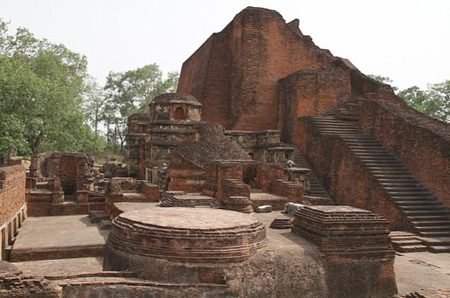
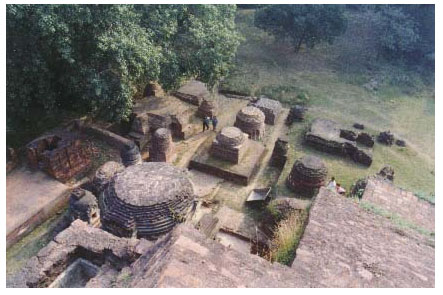
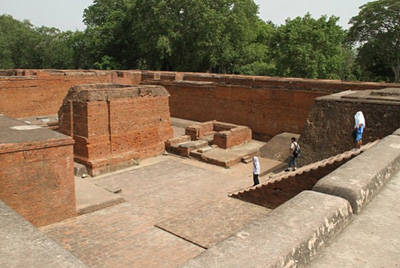

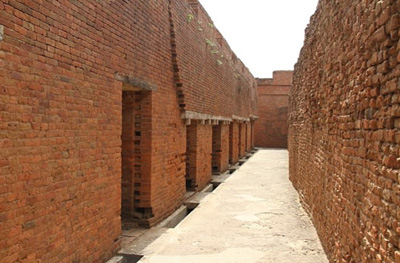
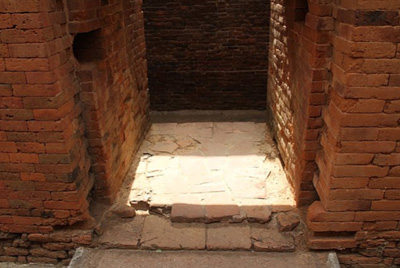
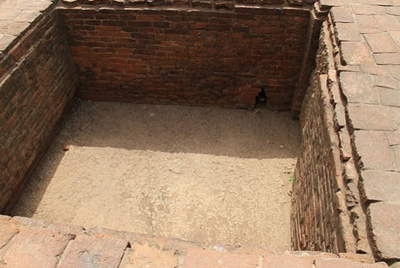
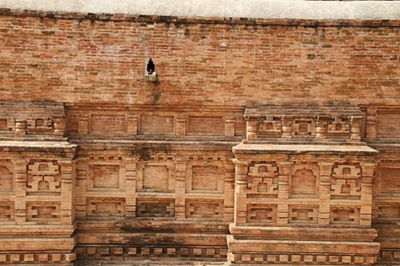
USEFUL LINKS:
1) www.nalanda.nitc.ac.in/about/NalandaHeritage.html
2) www.pilgrimage-india.com/buddhist-pilgrimage/nalanda.html